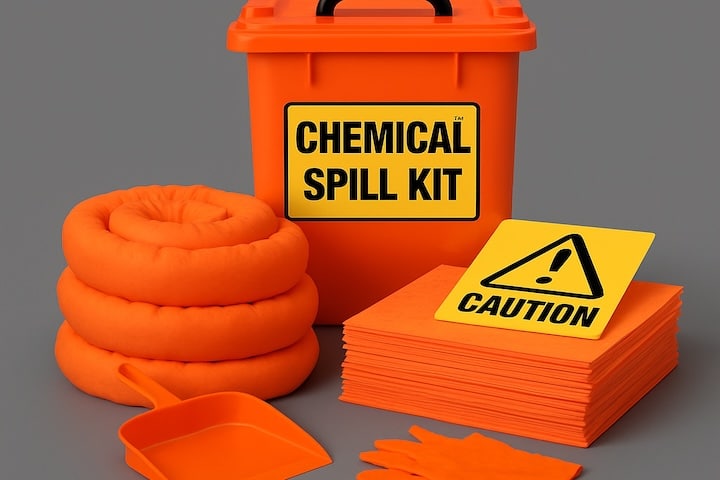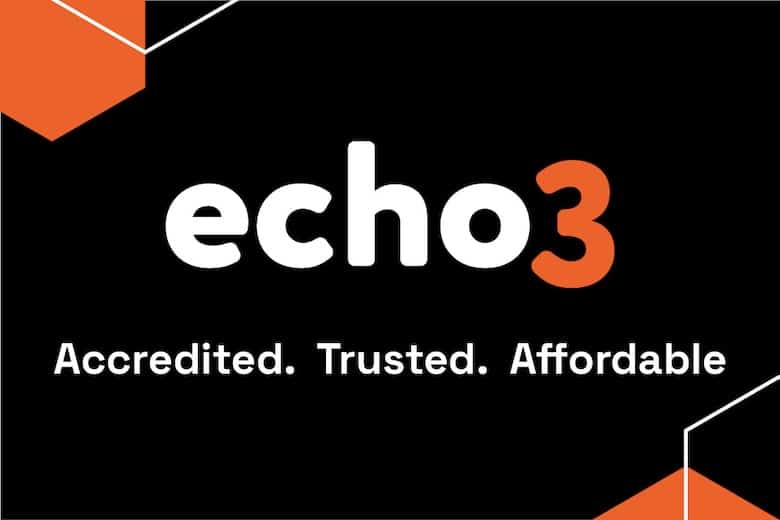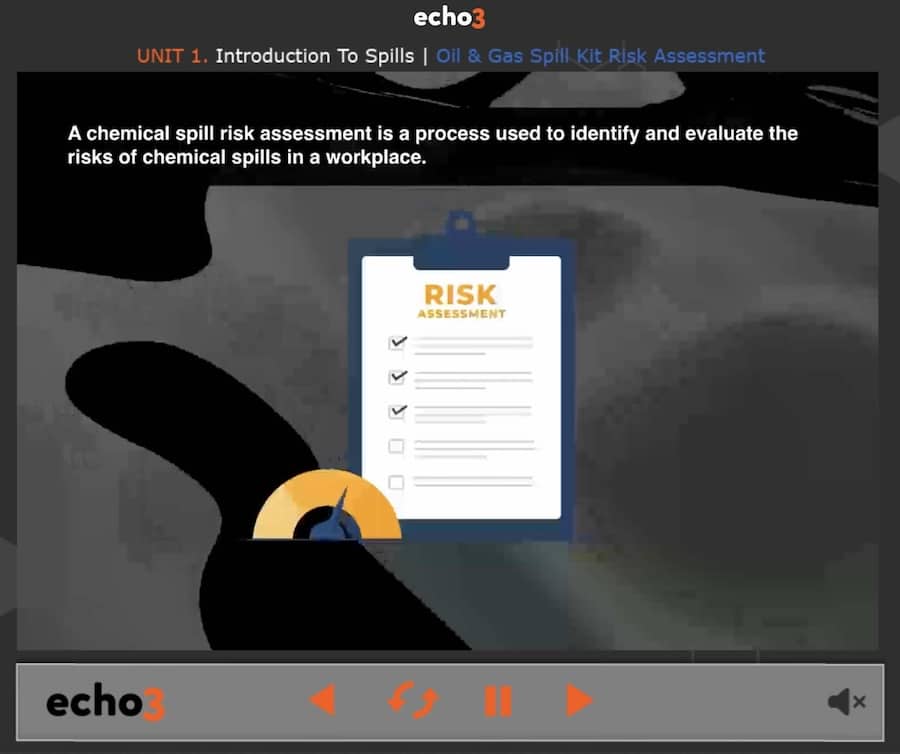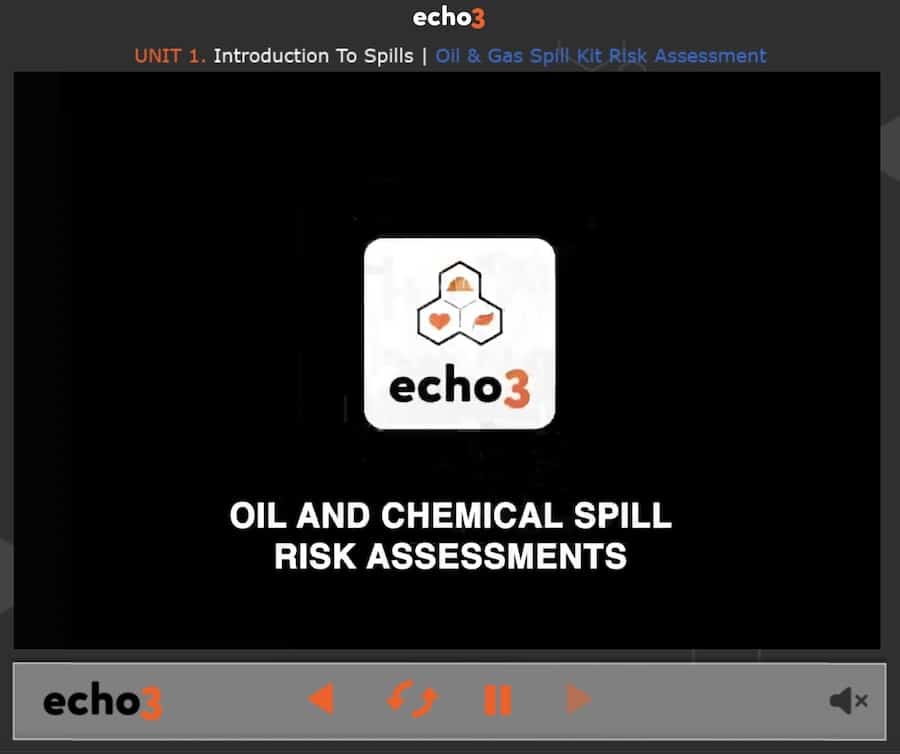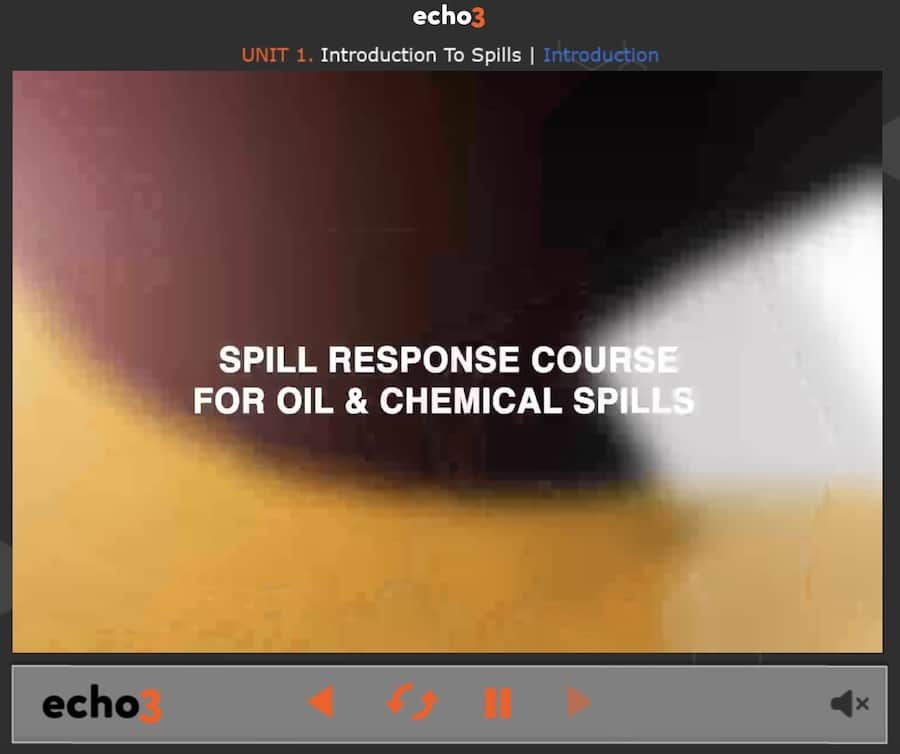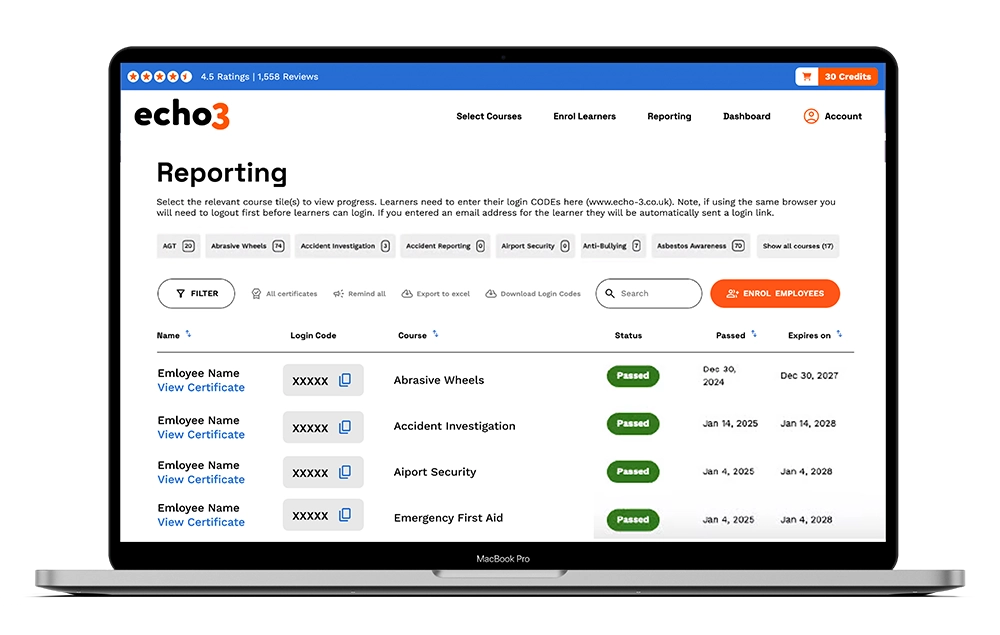Spill Kit Training (Chemicals & Oils)
This 30-minute, online Spill Kit Training (Chemicals & Oils) course teaches participants how to safely respond to chemical and oil spills.
To respond to a spill properly, staff need to:
- First, understand the situation
- Know how to keep themselves and others safe.
- Then Effectively contain the spill.
- And, how to safely clean it up.
- Finally, understand how to Report the spill.
This Spill Kit Training: Chemicals & Oils course provides the knowledge to achieve this. We cover;
- Whata spill kit is for.
- What’s inside the kit.
- The correct steps to take duringa And the right order to follow those steps.
By the end of this course, staff will know how to respond safely to spills and reduce environmental harm. An Echo3 certificate is included on completion.
For company orders the course includes an optional feature that requests learners to go and find their spill kit—so they’ll know exactly where it is when they need it.
No matter what kind of spill it is, staff should know the right actions to take. And employers should have training records.
Spill Kit Course Content
UNIT 1 – Introduction to Spills
- Course Objectives
- What are spill kits for?
- Risk Assessment
UNIT 2 – What is in a spill kit?
- What is in a spill kit?
- PPE (Personal Protective Equipment)
- Absorbent Materials
- Disposal Bag
- Types of Spill Kits
UNIT 3 – How to respond to a spill
- Spill Response Procedure
- First On the Scene
- Assess the Risk Step 1.
- Cordon Off the Area
- Step 2: Select the Correct PPE
- Step 3: Stop the Source
- Step 4: Contain the Spill
- Step 5: Clean up the Spill
- Step 6: Decontaminate and Dispose
- Step 7: Report and refill
Spill Kit Training Certificate
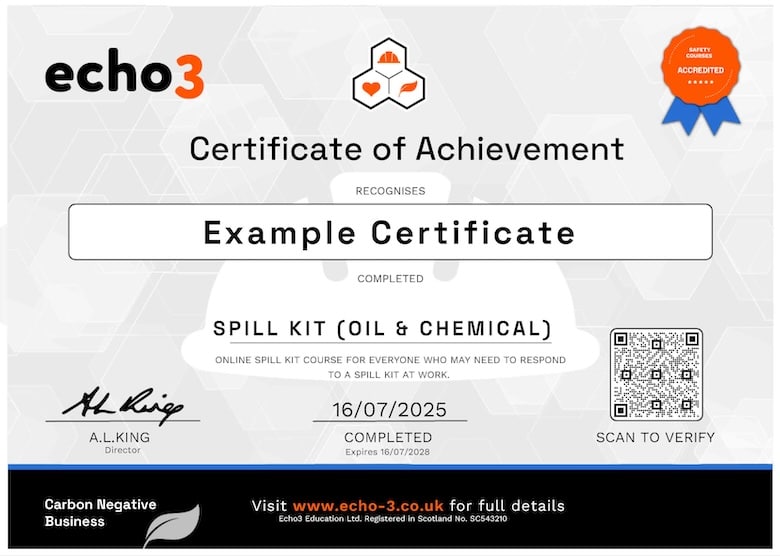
Download and Print Your Certificate
- Developed by qualified health and safety professionals
- Last Updated June 2025
- To gain the certificate you must complete the assessment which involves 20 questions.
- Access the Echo3 LMS any time to reprint certificates, check and set pass marks.
- The online Spill Kit Oil & Chemical Training certificate is valid for 3 years.
Course Preview
Echo3 courses include engaging motion-graphic video content, with full english subtitles
Reviews
How to Get Certified in 3 Steps
Individual Learners

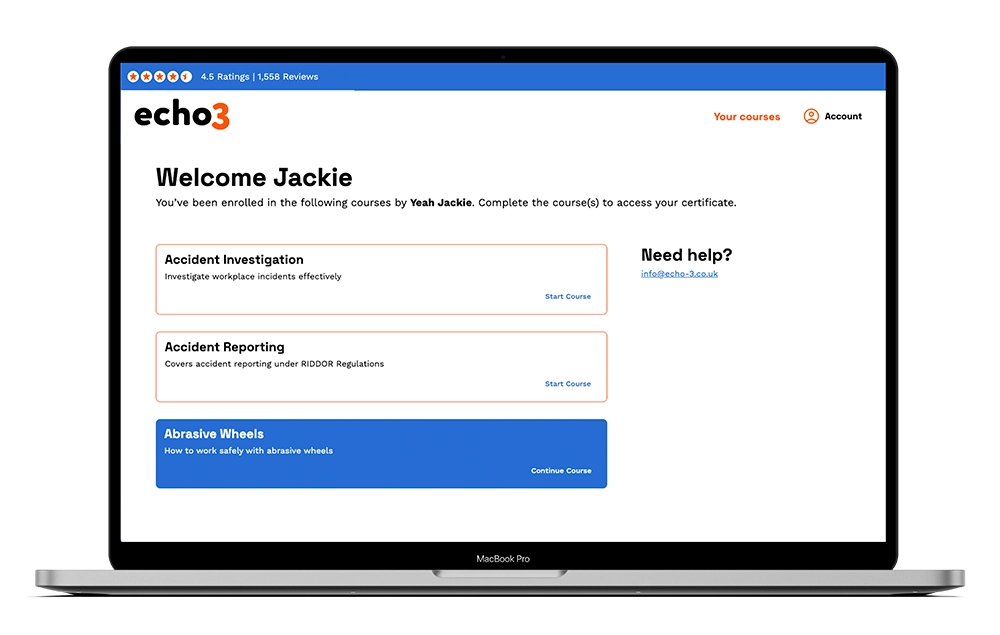
Benefits for Individuals
-
Engaging video-based content
-
Learner dashboard included
-
Instant access after payment
-
Free course retakes
-
Shareable digital certificate
 QR Code Certificate
QR Code Certificate



Bulk Buying Discounts
What are spill kits?
What Are Spill Kits?
Spill kits are used to quickly deal with spills at work.
Having one nearby means you can act fast to clean up a spill using the tools you already have on site—or at least control it until help arrives.
Spills can spread fast, so a quick response can stop a small problem from becoming a big one. It also helps prevent pollution and can save money on cleanup costs.
No matter what kind of spill it is, never ignore it or try to hide it—always take action right away.
That’s why it’s important to know where your spill kits are and how to use them properly. This way, you can stay calm and handle spills safely.
What are the different types of spill kit?
There are three main types of spill kits, each designed to handle different kinds of liquids.
- General Purpose Spill Kits
Use for: Non-hazardous liquids like water, coolants, or mild chemicals (often found in workshops, warehouses, or offices).
Contents typically include:
- Absorbent pads and rolls
- Absorbent socks, pillows or cushions
- Disposal bags with ties
- PPE like gloves and goggles
- Instructions for use
These kits absorb water-based and oil-based liquids.
- Oil-Only Spill Kits
Use for: Oil, fuel, diesel, and other hydrocarbons.
These kits are designed to absorb oil but repel water, making them ideal for outdoor use. For example, around vehicles or near water.
Contents typically include:
- White absorbent pads and rolls.
- Absorbent socks or booms.
- Pillows for larger spills or leaks.
- Disposal bags with ties.
- Gloves, goggles, and other PPE.
These kits can be used on water to clean up oil spills without soaking up water.
- Chemical Spill Kits also known as Haz mat Kits
Use for: Hazardous and aggressive chemicals, including acids, solvents, and caustic substances.
These kits are often used in labs, factories, or places handling dangerous materials.
Contents typically include:
- Brightly coloured absorbent pads (usually yellow for visibility)
- Chemical-resistant absorbent socks or pillows.
- Chemical-resistant gloves, goggles, aprons or coveralls.
- Disposal bags with labels and ties.
These kits will be specifically made from materials that are safe to use with corrosive or reactive substances.
How to respond to a spill?
When you first uncover a spill, the very first response is check the risks.
Ask yourself these questions:
What has spilled? If you know what it is (like oil, fuel, or chemicals), think about the risks. If you don’t know, always treat it as if it’s very dangerous.
Is anyone in danger? If yes, you might need to start an evacuation and get people out of the area.
Do I need help? If the spill is too dangerous or you’re not trained for it, leave the area with everyone else.
Are others nearby who need to be warned? Let people know about the spill and check if anyone is hurt.
Do they need first aid, an ambulance, or fresh air?
Who should you tell? Tell your manager or the right person in your workplace. Decide if it’s an emergency or if it can wait until the spill is cleaned up.
Is the spill a threat to the environment? If yes, you may need to call outside experts or authorities for help.
This may sound like a lot to think about quickly, but in an emergency, you’ll focus and decide fast.
Remember these three simple questions:
Am I at risk? Are others at risk? Is the environment at risk?
Answer these to help you decide what to do next.






